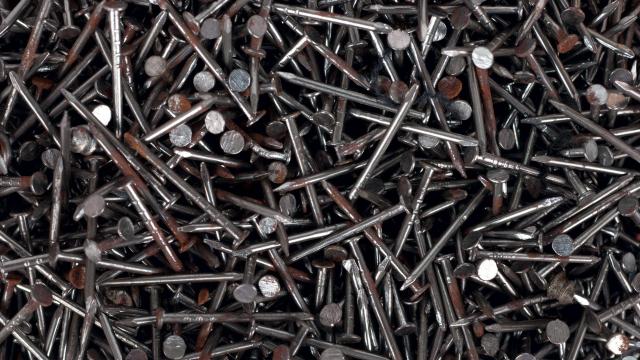Drywall is relatively durable and cheap, and looks quite nice if installed and maintained correctly. But it’s also easy to damage while you’re just living your life—and it can even damage itself, most commonly through the appearance of little bumps under the surface known as “nail pops.” (Despite the name, nail pops can also be caused by drywall screws).
A nail pop is what it sounds like—the nail or screw used to attach the drywall to the wall studs pops up, deforming or even breaking through the paper surface of the drywall. They can be subtle and easy to ignore, or they can be pretty unsightly, demanding attention. The good news is that while nail pops can be kind of alarming, unless you’re seeing a ton of them, they probably don’t indicate a serious underlying problem. The better news is that nail pops are fairly easy to repair yourself.
What causes nail pops in drywall?
There are a few basic reasons nail pops can happen:
- Shrinkage. New lumber is usually somewhat damp, and even if it’s been left to dry out for a while prior to installation, and the drying process can continue for a long time. As wood dries, it shrinks. If this is happening to your wall studs, they may have started slowly push out the drywall anchors. This is generally isn’t a concern beyond the aesthetics of having bumps or visible nail heads in your walls.
- Poor workmanship. If the crew or person who installed your drywall didn’t do a good job and skimped on the number of screws or nails used, used nails or screws that were too short for the drywall thickness, failed to space the anchors properly, or simply missed the studs entirely in a few spots, your drywall will show lots of problems, including nail pops, as the anchors that did bite into studs struggle to hang on.
- Settling. All structures will sink slightly and shift slightly on their foundations over time. This can cause cracks and other deformities in walls and ceilings, including nail pops.
- Moisture and humidity. If your home has a moisture problem, it can actually cause the opposite of shrinkage. As your studs expand and contract as moisture levels vary, it can slowly push the anchors out of the walls. If you expose the nail or screw head and see rusting, this may be the cause, which means you’ll need to tackle the moisture issue before repairing anything else.
How to fix nail pops in drywall
Fixing a nail or screw pop in your wall is pretty easy, assuming there isn’t an associated moisture issue. There are essentially two basic approaches:
- Punch it. One way to deal with a popped drywall anchor is to simply reset it by pounding it back into the stud, then repairing the damaged wall surface. For a nail, use a nail set to hammer it back into place. For screws, drive them back in using the appropriate screwdriver. Don’t overdo it—you just want to get them back under the surface of the wall. Then, patch the area with some drywall patching compound, sand the surface smooth, and paint. This technique is fast and easy, but the downside is that it probably won’t last—a once-popped nail or screw will almost certainly work its way back out again eventually.
- Pair it. A better approach is to secure the drywall: First, drive two drywall screws in above and below the popped anchor. Make sure you use the right length of screw, and don’t tear the paper surface of the drywall—drive them in until they crimp it, then stop. These new screws will hold the drywall to the stud more securely, preventing future pops. Then, reset the popped nail or screw using the advice above, and finally, repair the surface of the wall with patch compound. For a longer-lasting repair, use fiberglass mesh drywall tape on the area before you apply the compound.
If you see a lot of nail pops, or if they continue to happen, it’s a good idea to call in a professional to assess your situation.

Leave a Reply
You must be logged in to post a comment.